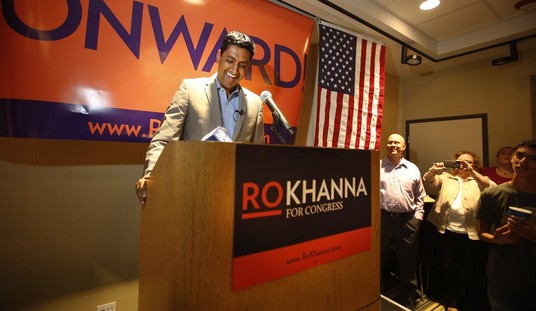A judge ruled last week that Sarah Palin’s defamation lawsuit against the NY Times can proceed to a jury trial. This comes after the same judge previously dismissed the case but it was reinstated after an appeals court ruled in Palin’s favor. The NY Times covered the story last Friday. For some reason the story was assigned to the person who usually covers the “business of transportation, with a focus on autonomous vehicles, airlines and logistics.”
The suit, filed in June 2017, is centered on a Times editorial published that month under the headline “America’s Lethal Politics.”…
The judge, Jed S. Rakoff of Federal District Court in Manhattan, dismissed Ms. Palin’s suit two months after it was filed, saying of the mistaken editorial: “Negligence this may be; but defamation of a public figure it plainly is not.” Last year, a three-judge panel overturned that decision and reinstated the case.
On Friday, weeks after lawyers for Ms. Palin and The Times made arguments at a hearing, Judge Rakoff denied a Times motion for summary judgment. In ordering the case to proceed, he said there was “sufficient evidence to allow a rational finder of fact to find actual malice by clear and convincing evidence.” He set a Feb. 1 trial date.
In case you’ve forgotten, the Times’ editorial was written shortly after a shooting by a deranged Bernie Sanders supporter which nearly killed Rep. Steve Scalise and others who were having a baseball practice in Alexandria, Virginia. After recounting the shooting the the Times’ offered this call back to a previous shooting involving a member of congress [emphasis added]:
Was this attack evidence of how vicious American politics has become? Probably. In 2011, when Jared Lee Loughner opened fire in a supermarket parking lot, grievously wounding Representative Gabby Giffords and killing six people, including a 9-year-old girl, the link to political incitement was clear. Before the shooting, Sarah Palin’s political action committee circulated a map of targeted electoral districts that put Ms. Giffords and 19 other Democrats under stylized cross hairs.
Conservatives and right-wing media were quick on Wednesday to demand forceful condemnation of hate speech and crimes by anti-Trump liberals. They’re right. Though there’s no sign of incitement as direct as in the Giffords attack, liberals should of course hold themselves to the same standard of decency that they ask of the right.
Remember that? The point was clear. The attack on Rep. Scalise and others was bad but the partisan “incitement” wasn’t as clear as it had been in 2011 when Sarah Palin’s map was clearly connected to the shooting of Rep. Giffords.
Except that was a lie. Not only was no connection to map or Palin ever found there was some evidence Loughner had a pre-existing fixation on Giffords. Two days later the NY Times corrected the editorial. But in a story about the lawsuit published today by Erik Wemple at the Washington Post, he highlights evidence that makes it look like the targeting of Sarah Palin may have shown reckless disregard for the truth:
As court testimony showed, then-Editorial Page Editor James Bennet assigned then-editorial board member Elizabeth Williamson to write the editorial. She handed in a draft that stopped short of asserting a Palin-Loughner link. In fact, she linked to an ABC News article noting the absence of such a link, though Bennet says he didn’t click on it…
Despite the plain language of his editorial, for instance, Bennet testified multiple times that he “did not intend to imply a direct causal link between [the map] and Loughner’s horrific acts.” It didn’t “occur” to Bennet that writing “the link to political incitement was clear” suggested that Loughner was “directly inspired or motivated” by the map. Nor did he “intend for readers to draw such an inference.” The actual intended message, insisted Bennet, was that “overheated political rhetoric can create a climate inducive to violent acts.” At the same time, though, Bennet acknowledged in his testimony that “incitement” can be interpreted as a call to violence.
Apparently during this stage of the process, Judge Rakoff is required to view things in the light most favorable to the plaintiff, i.e. Palin. So given that caveat, here’s the conclusion of his ruling:
Once again, there is considerable evidence that defendants mount to support the notion that Bennet simply drew the innocent inference that a political circular showing crosshairs over a Congressperson’s district might well invite an increased climate of violence with respect to her. But, taken in the light most favorable to plaintiff, the evidence shows Bennet came up with an angle for the Editorial, ignored the articles brought to his attention that were inconsistent with his angle, disregarded the results [of] the Williamson research that he commissioned, and ultimately made the point he set out to make in reckless disregard of the truth.
Again, that doesn’t mean the judge has decided that’s the case. The point is that there’s enough of a reasonable case to be made for Palin’s viewpoint that this is going to need to be decided by a jury.
Finally, Wemple notes that during the oral arguments in this case, the Times made an argument based upon an email exchange that editorial page editor James Bennet (who resigned after the Sen. Cotton editorial) had with Times’ columnist Ross Douthat:
To highlight Bennet’s lack of awareness regarding his own work, Brown cited an email exchange between Bennet — who resigned as editorial page editor in June after the Tom Cotton op-ed controversy — and Ross Douthat, a Times columnist, after the editorial hit the Internet. According to court documents, Douthat alerted Bennet to the lack of evidence about any link between Palin and Loughner’s actions. Bennet responded:
Thanks, and I’ll look into this tomorrow. But my understanding [is] that in the Giffords case there was a gun sight superimposed over her district; so far in this case we don’t know of any direct threat against any of the congressman on the field. That’s not to say that any of it is ok, obviously, or that the violence in either case was caused by the political rhetoric. But the incitement in this case seems, so far, to be less specific.
Bennet indeed looked into it the next day, instructing colleagues to explore “what the truth is here” regarding the alleged Palin-Loughner linkage. Such a directive could well be interpreted as an indication that Bennet didn’t know that his edits were conveying a falsehood.
Yet attorney Shane Vogt, who argued for Palin, turned that argument on its nose. If Bennet hadn’t meant to suggest incitement by Palin (or her PAC), he would have responded differently to the backlash from Douthat and readers. Instead of tasking colleagues with looking into the matter, he would have said, “ ‘Oh, that’s not what I meant,’ ” argued Vogt.
It’s a good question. If the only problem with the editorial was that people were misunderstanding Bennet, why didn’t the correction just say that? Instead it completely rewrote the paragraph. Clearly he was asserting a connection that was false. The question is whether Bennet’s studied ignorance of a widely reported fact constitutes reckeless disregard for the truth. Here’s Wemple’s take:
The nonexistence of a Palin-Loughner link was widely reported years before the editorial was published; Bennet chose not to click on a link in the editing process that would have clarified as much; and Bennet’s reflections on incitement are nuanced to the point of contradiction and may not sit well with a jury.
I don’t know if she’ll win but she really deserves to in my view. She was unfairly hounded for days over what was always a lie. For a top editor at a top paper to revive that lie six years later and then claim ignorance is just not credible.







